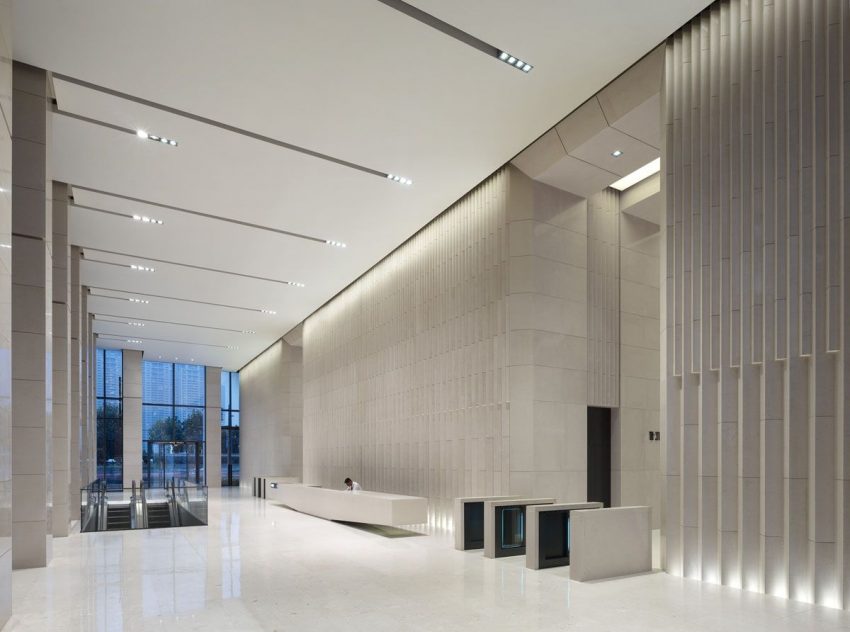It seems that lately, no matter where you look, people are buzzing about minimalist architecture. The word minimalist has become synonymous with the clean, luxurious, and clutter-free aesthetic, so it goes without saying why designers and homeowners alike are falling in love with this “less is more” mentality. Having the ability to carefully select design elements in order to reach an optimal outcome is a rewarding challenge in and of itself.
In minimalist architecture it is about getting more with less. By being more mindful and strategic about our choices, we have the ability to breathe life into spaces in a simple yet powerful way. Unfortunately, it’s easy to lose focus on the big picture when trying to follow the main stream. Instead of using a conscious decision-making process, we can find ourselves blindly copying what everyone else is doing for fear of deviating from what has already been established.
Below are three examples of ways you can inject more personality into your design choices to enhance minimalist architectural design and express its true essence in a unique way that represents you.

- Less is more (but make mindful choices that matter to you)
Because contemporary minimalism is all about removing as much excess clutter as possible, it can be easy to go overboard with oversimplification. A common misconception is that minimalism is bleak and lifeless, composed of as few materials as possible. This way of thinking can easily lead us to question exactly how much is “too much” and whether we are making the “right” choices when adding new design elements. Not true at all.
Minimalism is not a formula. There is no magic number that dictates exactly how much should be included in your overall architecture. However, minimalism evokes strong feelings of sheer calm pure and a sense of contentment. That’s why the minimalist work of any good designer will make a statement in a way that can’t be easily rationalized or replicated.
You can’t strip a space down to the bare bones and call it minimalism. It is a very personal experience that requires you to look within. Each piece of the puzzle must speak to you in a way that makes it impossible to ignore. When you pick up the pieces consciously, with strong intention, you’ll know exactly what belongs and what doesn’t.
- Be curious
It’s dangerously easy to lose sight of ourselves in today’s technological era. No matter where you look, it can feel like you’re bombarded with “tons” of information about what you should or shouldn’t be doing. This can instill in us a sense of fear so deep that it prevents us from being curious about new things just for curiosity’s sake.
Sure, it’s tempting to take the safe route in your creative endeavors. But safety is not sustainable for many of us, especially if it forces us to lose a part of ourselves. Minimalism can sometimes get a bad rap because it’s seen by some as a passing brainwashing trend that lacks depth or substance. This negative connotation alone is enough to turn even the most curious person away from minimalism before giving it a chance.
Minimalism is not for everyone. But if you find yourself rejecting it prematurely because of outside influences, then it’s worth a second look. Sure, it can seem even more impossible to explore new concepts, brands, and ways of thinking when there is resistance to change, but you shouldn’t accept that as defeat. If you allow your innate sense of curiosity (we all have it) to be the driving force behind your actions, you’ll be surprised to discover a new sense of creativity buried deep in you.
- Don’t Be Afraid to Get Personal
Part of the popularity of minimalist architecture has to do with its tendency to call for very simple and efficient plans that avoid unnecessary complexity. This efficiency is frankly a breath of fresh air, as it eliminates a number of problems that tend to accompany larger and more complex buildings. A simple but well thought out plan saves time and money on excess materials. It also saves time and money on long-term maintenance.
For proponents of minimalism, its advantages are self-evident. While this is all well and good, you must never lose sight of the emotional and physical needs of the people who will inevitably inhabit this space. Minimalist architecture should certainly evoke a sense of beauty, but not at the expense of functionality.
Homes and offices should ultimately be designed to bend to our everyday needs—not the other way around. Minimalism is an invitation to make highly personal and thoughtful design decisions that will ultimately elevate the human experience.
